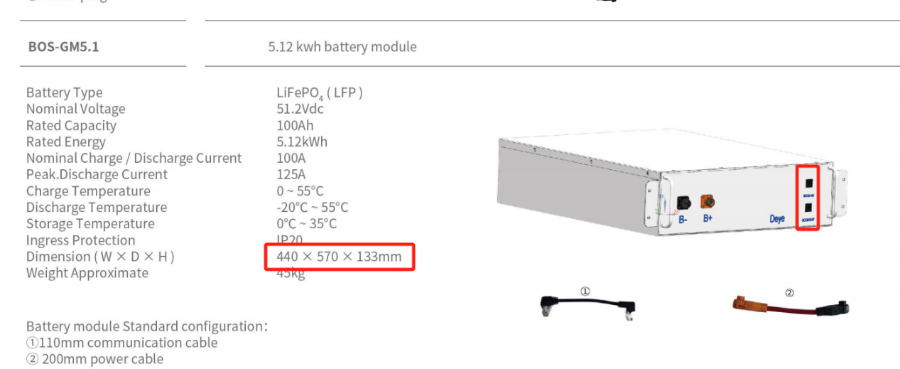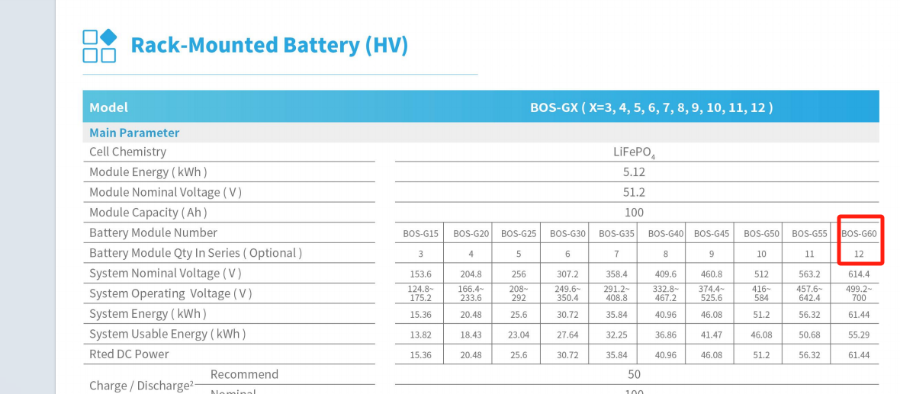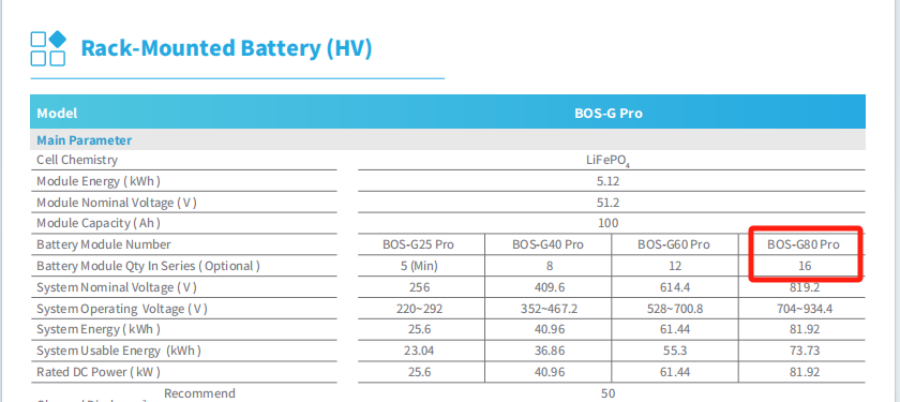-
 FAST SHIPPING
FAST SHIPPING
-
 COMPETITIVE PRICE
COMPETITIVE PRICE
-
 EXCELLENT AFTER-SERVICE
EXCELLENT AFTER-SERVICE
How to Wire Solar Panels in Series: Safe Steps, Diagrams & Calculations
Dec 19,2025How to Set Up Solar Panels for an RV: A Practical Guide
Dec 09,2025How Do You Make Money From Solar Panels: Practical Strategies
Dec 05,2025How to Keep Snow Off Solar Panels: Practical Tips for Winter Care
Nov 24,2025How to Build a Solar Farm: Requirements, Costs & Risks
Nov 20,2025If you need to purchase related products, explore our battery catalog or contact us directly for more model options.
To help you better understand the main differences between the BOS-G PRO and the previous BOS-G product, and to make informed decisions during selection and use, we provide the following information.
I. Main Differences Between BOS-G PRO and BOS-G Systems
Size Differences:
BOS-GM5.1 (previous battery pack):440 × 570 ×133 mm
BOS-G-Pack5.1 (PRO version battery pack):440 × 585 ×133 mm
Interface Changes:
The shape and position of the communication port on the PRO battery pack differ from those on the original BOS-G system.


Bracket Compatibility:
The PRO system maintains the same structure as the original 3U-H RACK and 3U-L RACK brackets; existing brackets can still be used, saving on hardware investment.
Capacity Expansion Capability:
The BOS-G system supports up to 12 battery packs (60 kWh).
The BOS-G PRO system supports up to 16 battery packs (81.92 kWh).


→ More suitable for large-capacity commercial projects.
II. Common Customer Questions and Handling Recommendations
Question 1: The high-voltage system BMS of the original BOS-G is configured with 12 battery modules. Can BOS-G PRO battery packs be connected?
Answer: Yes, but the number must be limited to 12 modules or fewer; otherwise, the voltage will exceed limits and the BMS will not recognize them.
Question 2: What should be done if a customer uses a BOS-G high-voltage box with all BOS-G PRO battery packs?
Answer: Purchase an additional accessory kit: 10100602000085 BOS-GM5.1 BOS-GM5.1 BCable 2000 DEYE BOS-G After-Sales Accessory Kit (Single Carton)
Question 3: What should be done if a customer uses a BOS-G high-voltage box with both BOS-G PRO and BOS-G battery packs?
Answer: It is mandatory to require the customer to place the batteries in separate layers, for example: place BOS-PRO on the lower layer and BOS-G on the upper layer, and clearly label each. Mixed insertion is not allowed. Otherwise, it is recommended to use a separate bracket for batteries of the same model. Additionally, purchase the accessory kit: 10100602000085 BOS-GM5.1 BOS-GM5.1 BCable 2000 DEYE BOS-G After-Sales Accessory Kit (Single Carton)
III. System Advantages of BOS-G PRO
Supports more battery module expansion (up to 16 modules), suitable for medium and large-scale projects.
More intelligent modules with USB remote upgrade capability, compatible with DEYE inverter remote maintenance.
Excellent safety performance, using LiFePO₄ material with a cycle life of over 6000 times, supporting 90% DOD.
Wide operating temperature range (-20°C ~ 55°C), suitable for operation in harsh environments.
10-year warranty, ensuring long-term stable operation for customers.
←
How Long Will a 200W Power Station Last? A Comprehensive Guide to Runtime Calculations
→
Power Conversion System (PCS) in Energy Storage Systems
 +31610999937
+31610999937 [email protected]
[email protected] De Werf 11, 2544 EH The Hague, The Nederland.
De Werf 11, 2544 EH The Hague, The Nederland. WhatsApp: +1 (917) 257 2995/
WhatsApp: +1 (917) 257 2995/Copyright © 2023 Uni Z International B.V. VAT: NL864303440B01 All Rights Reserved
